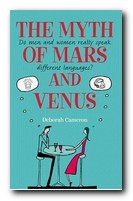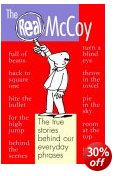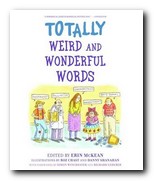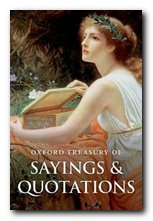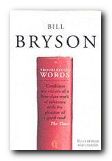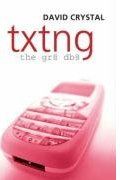where slang comes from, and what it’s used for
The Life of Slang is a study of linguistic creation. We know that when a slang word is introduced into the language, it can become Standard English if it is adopted by enough people and put into general use. And of course the reverse can happen when a Standard English term is used in a new way and thereby becomes slang – which is what’s happened to the term gay since the end of the nineteenth century. In fact the process can continue, and by re-adoption the slang word is taken back into Standard English as a legitimate and additional meaning of the term.
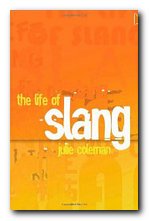 People commonly object to slang when it is first introduced – particularly if it comes from another country such as Australia or the United States. But then resistance weakens (among some groups) and people become late adopters and start to embarrass their children by employing slang which is not a natural part of their verbal register – which is why the elderly Duchess of Cornwall made herself ridiculous by describing the engagement of her stepson (and future king of England) as ‘wicked’.
People commonly object to slang when it is first introduced – particularly if it comes from another country such as Australia or the United States. But then resistance weakens (among some groups) and people become late adopters and start to embarrass their children by employing slang which is not a natural part of their verbal register – which is why the elderly Duchess of Cornwall made herself ridiculous by describing the engagement of her stepson (and future king of England) as ‘wicked’.
Another popular misconception is that the English language is somehow ‘infected’ by slang from other languages. This is simply not true. Some terms are found useful and adopted, others are not. You don’t hear English people using ditzy, which is a perfectly normal American term for silly or scatterbrained. And Americans refer slightingly to their own lower-class as ‘trailer trash’ not ‘chavs’. Both countries are selective about the terms they wish to borrow and use.
There’s also a longstanding belief that the use of slang impoverishes somebody’s verbal skills or their range of diction. Once again, there is no evidence to support this belief. Slang is simply an additional tool for communication which is used to mark attitudes to a topic or membership of a group. In fact all speakers can switch in and out of a variety of linguistic registers with no trouble. This is an endemic feature of language use.
In this very readable study of slang, Julie Coleman examines the way in which slang is formed – which turns out to be the same way as Standard English, through word-combination, back formation, and borrowings.
How it’s imported from other countries is a different matter. She puts a great deal of store on cross fertilization between British and American troops during the first world war – but this doesn’t seem altogether convincing, given the brevity of contact between the two forces.
There’s an analysis of literary texts from Chaucer onwards that seeks to provide evidence for her claim that the use of slang increases as time goes on. In fact she claims that slang was not commonly used before the renaissance, but admits that she has no evidence to prove it. She also covers slang from other English-speaking countries – Australia, New Zealand Canada, and even India
A great deal of her exposition is a historical account of underworld cant taken to Australia by transported British felons – and despite Australian national pride, developed from the early nineteenth century onwards. Australia is particularly rich in slang since it receives its linguistic influences from two English-speaking sources – both Britain and the United States.
There is a blurred distinction between slang and colloquialism or idiom which is not always easy to disentangle. Words such as wonga and moolah are not used for anything other than slang terms for money, whereas words such as knob and beef can be used in their conventional senses of handle and meat, as well as their common use as slang terms.
She covers terms generated by the press, the music hall, cinema, pop music, television, and radio – with a generous nod to Round the Horne which ‘preserved one form of slang [Polari] that might otherwise have fallen from use altogether’.
She finishes with a survey of the most rapidly developing field of new terms of all – computer technology and its users. The Internet is the ultimate democratic medium and also the most immediate. Events on one side of the world may now be made known on the other as they are happening – via Twitter, Facebook, blogs, and video depositories such as YouTube.
Online dictionaries of slang compiled in the form of Wikis are known to vary greatly in their reliability and quality. Nevertheless, she gives a very respectful account of the user-generated Urban Dictionary. Then, after this fairly exhaustive survey she concludes by re-examining what is required in order to define slang – and it’s not easy.
It’s not necessarily new, or linguistically unusual, or associated with uneducated people, or necessarily vulgar. It’s not just colloquial language taken to an extreme. It doesn’t include dialect or jargon, although local and professional slang do occur. It doesn’t include swearing, though some swearing is slang. Neither is it restricted to the spoken language to the extent that it once was. It isn’t necessarily used for deliberate effect. Slanginess isn’t a quality of words or meanings: what’s slang in one context wouldn’t be slang in another.
In the end she opts to describe it as an attitude to language use which is recognised by fellow users in certain groups. This might seem disappointing to those seeking the reassurance of a quasi-scientific definition. But it strikes me as a step forward, a clearing of the decks from what was once thought to be a simple matter of making word lists and labelling the contents ‘slang’.
© Roy Johnson 2012
Julie Coleman, The Life of Slang, Oxford: Oxford University Press, 2012, pp.354, ISBN: 0199571996
More on dictionaries
More on language
More on literary studies
More on writing skills
